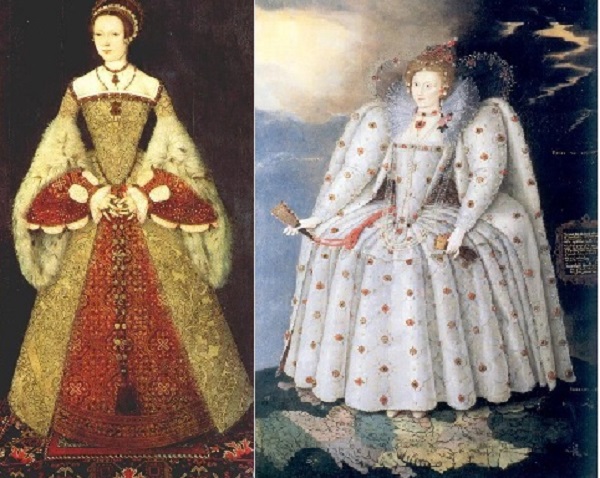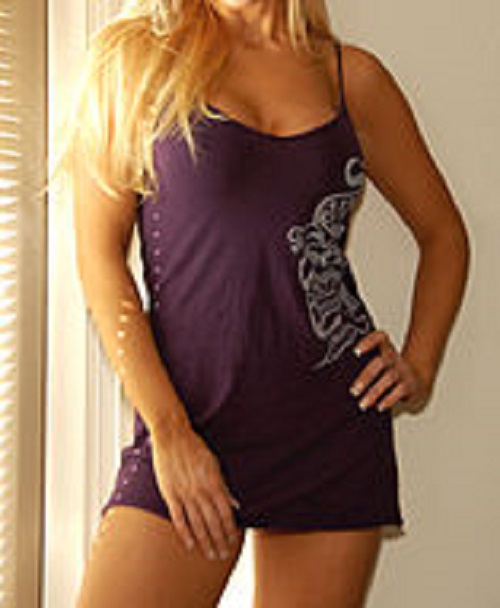Putting on a gown during the Tudor Era for a lady was not at all simple process. Wearing outfit, time is taken for hair, makeup can take more than half an hour. The order to put on clothes was as mentioned. First Stockings, earrings, and shoes. Then Chemise, petticoat, Farthingale, Corset, Bumroll, Parlet, Kirtle and then at last Gown.
Each layer of clothing worn by a Tudor lady was necessary to achieve her final, and distinctive look. The underwear itself was one of the most important layers as in many cases this is where the overall shape of the outfit would be defined.

For a lady at court, only the finest materials would have been used for the creation of her wardrobe, whereas a woman of poor social standing would have to make to with poorer fabrics, coarse linens and wool.
Chemise and Farthingale
Contents
The chemise is a term which is still used today to describe a certain kind of undergarment, though Chemise and Farthingale are no longer fashion items, they were, however, the forerunners of the panniers and crinolines of later periods in history.
Define Chemise
The chemise was a piece of clothing, which is also referred to as a “smock” or “shift”, is the foundation garment on which all others are added. Worn next to the skin, Chemise was to protect clothing from sweat and body oils.
How was the Word Chemise Derived?
The origin of the word chemise may be from Middle English word Anglo-Norman Chemes which means Shirt or from the Latin word Camisa or Camisia that was used for the shirt, nightgown or undergarment. It can also be derived from the Proto-Germanic word Hamipijq which means clothes, shirt or skirt or from the Old German word Hemidi also known as German Hemd that means shirt.
What was the Tudor Chemise?
Everyone regardless of rank or status would have a chemise, they would also ensure that there were enough in the wardrobes to provide at least a week’s worth of clean linens. The higher the rank of the lady the more that she had access to, and the more changes of linen were available to her.

During that time, ladies were hardly indulged in full-body baths regularly. And also the clothing of the upper level and the middle-level class was not of the kind that they could wash them on a river rock or scrub them with lye soap and ashes, hence chemises became the vital part of the costume to the Tudor ladies.
Despite hygiene not being as good as it should have been there was still some pride to be had in being able to wear clean linens every day. For the nobility, this item would be of the whitest and finest linen.
Define Farthingale
Essentially, Farthingale was a hooped skirt which had been stiffened by the use of willow cuttings, robe, bent or even whalebone to give it its structure. It was worn under the skirt of a well to do woman to give the shape to the fashionable silhouette of England mainly.
How was the Word Farthingale Derived?
The Farthingale is a Spanish word that has its origin from Spain. It is the English version of the basic Spanish word “Verdugado” which means wood in Spanish. It basically refers to the rings of willow or woods that form the rigid ring-like structure attached to the lady skirt. There are also many other spellings of farthingale from the Elizabethan era which are vertical, cardinal, and Verdugo, etc.
The first Spanish word Verdugados was noticed by the 1470s. Then the word took its place in the noble women’s dress two decades later. It meant to be the series of single hoop or a series of double hoops or sometimes more than that at the bottom of the skirt.
What was a Tudor Farthingale?
This structure would then define the shape of the gown when it was worn. They soon became an essential part of Tudor fashion. The Elizabethan farthingale was a little different. It moved away from the conical shape of the Spanish farthingale and instead took the broad, crescent-shaped form of the French farthingale.

This took the form of a large crescent-shaped pad which was again stiffened with wood or whalebone. It was fastened around the waist of the lady beneath the skirts which resulted in the gown taking on a broad and rounded look over the hips, and allowed the skirts to hang freely in natural folds.
Farthingale would have intricate embroidery around both the neck and the cuffs in black, red or white thread work. Some may have even been trimmed with an early form of lace.
Chemise and Farthingale in Different Times
In the time of Henry VIII, the Chemise and Farthingale were worn with a usually square neck shape which would mirror the line of the bodice when worn.
The Elizabethan chemise or smock would have a small standing collar which was edged with a small frill. This frill would later develop into the Elizabethan ruff. The sleeves of the chemise were long, with a narrow frilled cuff.
The farthingale is believed to have been intruded into England by Catherine of Aragon when she came to England to marry Prince Arthur, the elder brother of Henry VIII. As a princess of Spain, she would wear the Spanish farthingale, and it was a style that was soon adopted at court.
This is how Fashions changed over time.
- Is the early Renaissance in Italy? Has high waist and Finestrella sleeves.
- Middle of the Renaissance, influenced by the Tudor court. Has a square neckline, funnel sleeves, and a conical Spanish farthingale.
- End of Elizabeth’s reign. Has leg-of-mutton sleeves, long V-shaped waistline, ruff, and barrel-shaped French farthingale.
Modern Chemise and Farthingale
For today’s women, the chemise is basically a women’s garment that looks similar to her older shirts but a bit more delicate and revealing. It can be now referred to as the loose fitted, sleeveless undergarment or can say a lingerie type that reaches up to the waist. It does not have any buttons or fasteners and is worn just by dropping over the head, stepping into it and then lifting it.

Farthingale died out of fashion after the first few decades of the 17th century. It is not in use currently in any form.
More Info On- Elizabethan Era Hairstyles Fashion, Tudor Clothing Doublet, Dresses, Dress up Dresses Clothing Fashion
